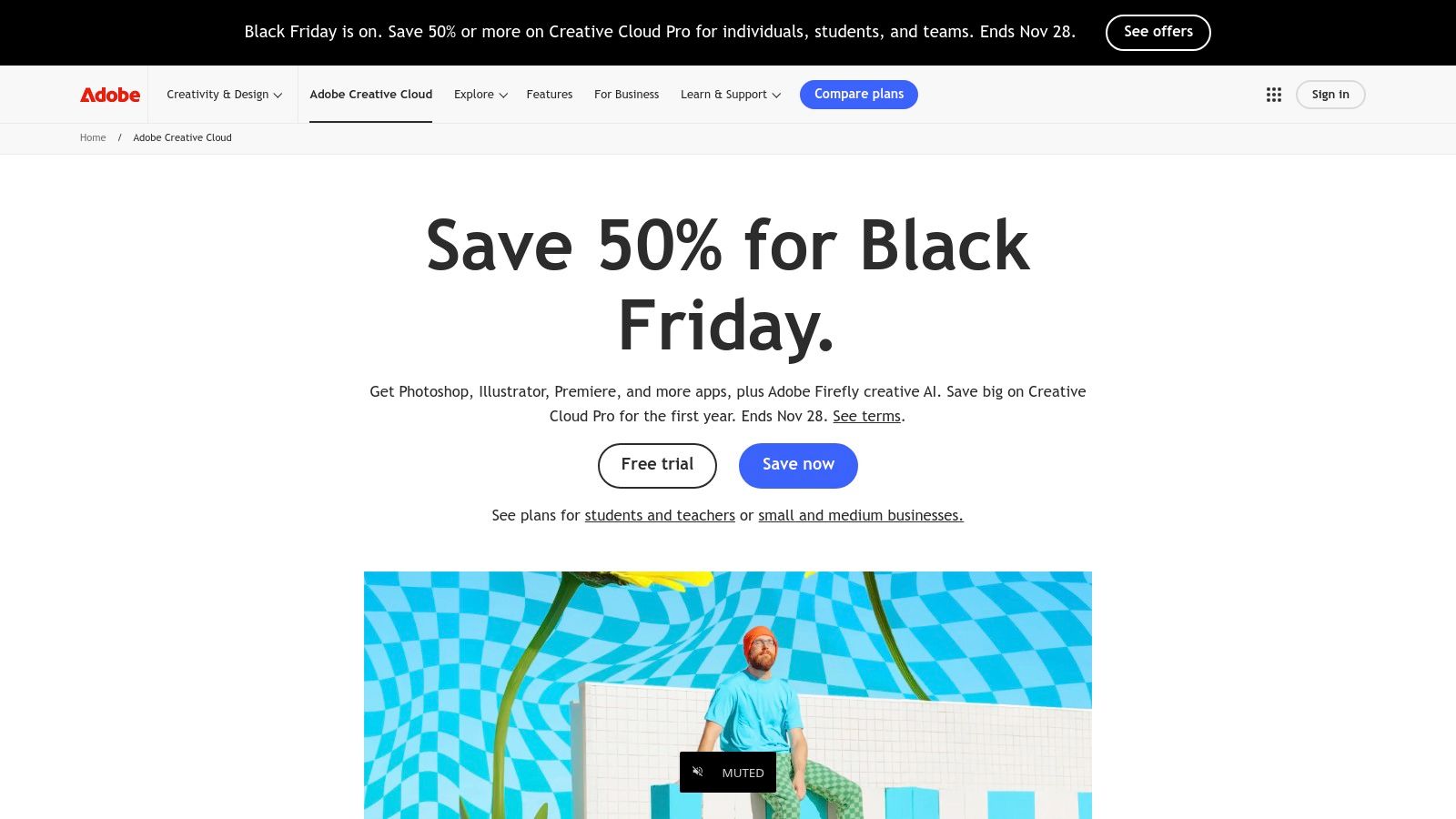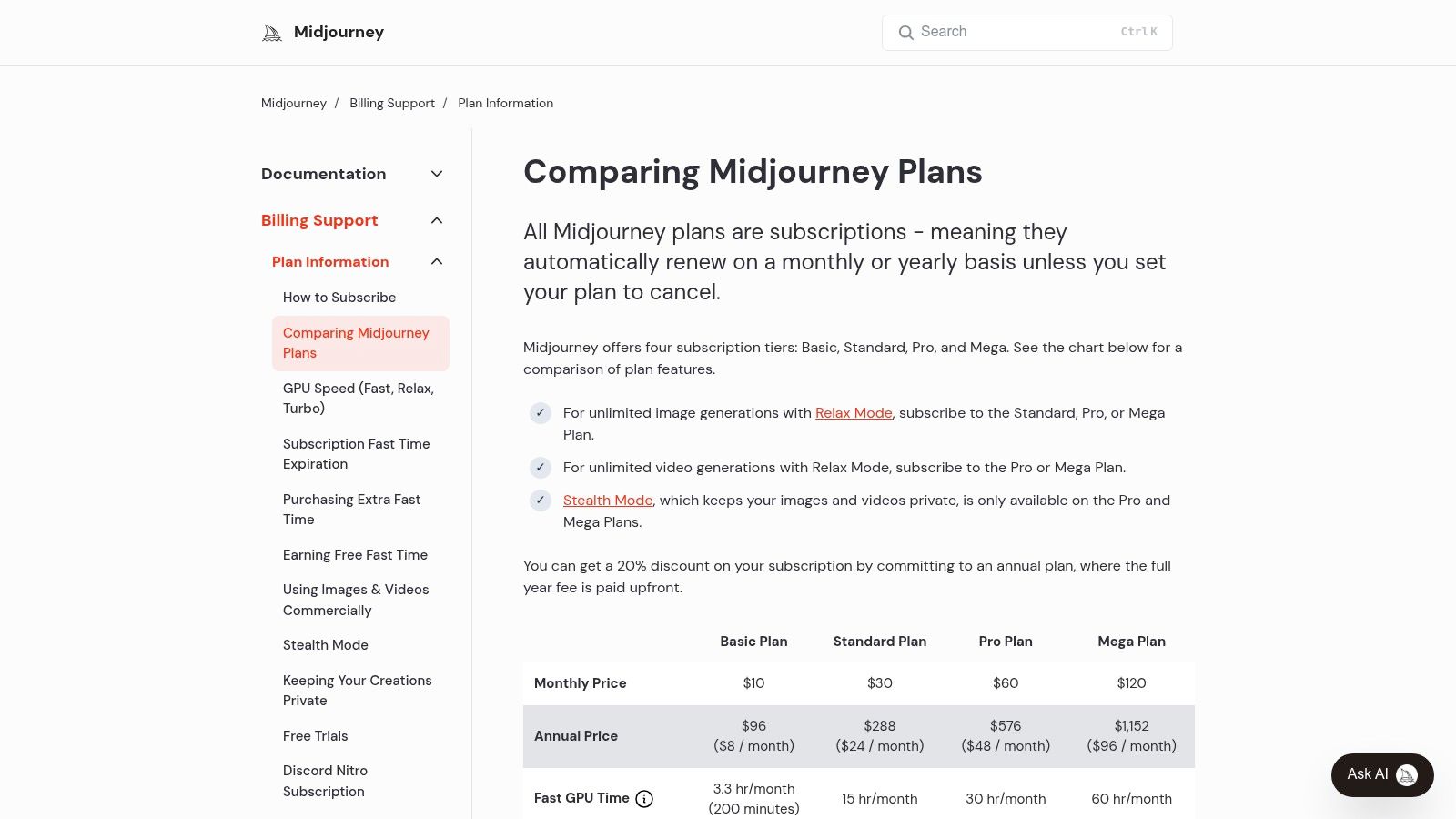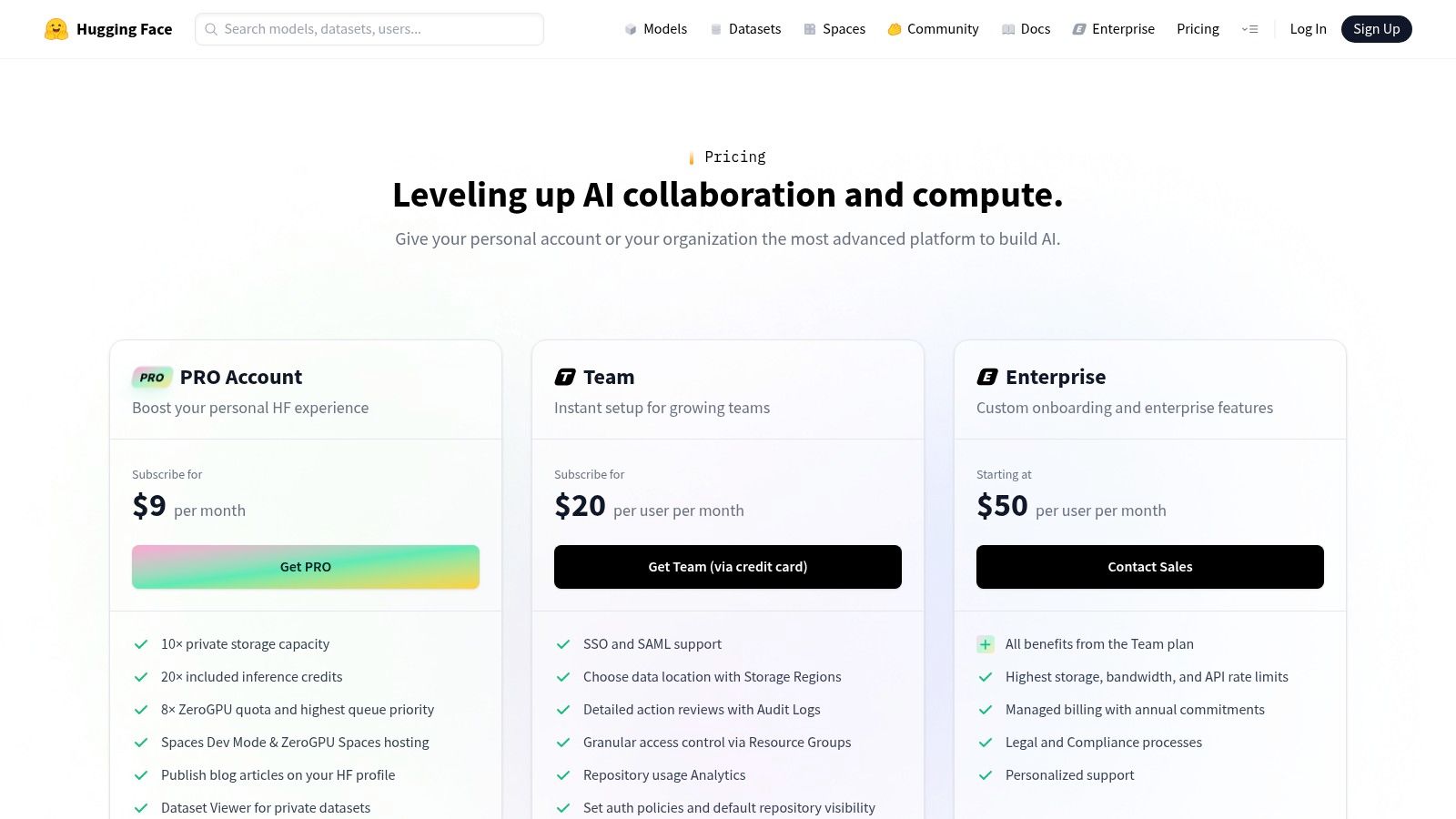In today's fast-paced digital landscape, creative teams are under constant pressure to produce high-quality visual content faster than ever. From 3D models and game assets to marketing visuals and product imagery, the demand for speed and scale is relentless. This is where ai content creation tools become essential, not just as assistants, but as core components of a modern, efficient production pipeline.
For enterprises, the challenge is adopting these powerful technologies responsibly, ensuring compliance, IP protection, and budget control. This guide cuts through the noise to profile the 12 best AI tools that help creative studios and brands meet these demands. Before we dive in, if you're looking to unify your entire creative process, why not try Virtuall's Creative AI OS? It integrates 3D, image, and video generation with powerful collaboration and management tools in one secure workspace. If you have not generated anything already, you can try it for free and experience a smarter way to create.
This resource is designed to help you, whether you're a 3D designer, game developer, or creative director, find the right platform for your specific needs. We'll explore a range of solutions, from specialised text-to-image generators like Midjourney to comprehensive suites like Adobe Firefly. For a broader perspective on how AI is shaping the industry, discover the best AI tools for content creators that can enhance various aspects of your workflow.
Each entry in our list provides a detailed analysis, including key features, pricing, potential limitations, and practical use cases, complete with screenshots and direct links. Our goal is to equip you with the insights needed to make an informed decision and effectively integrate these powerful tools into your creative workflow.
1. Virtuall
For creative teams seeking a unified solution to accelerate visual production, Virtuall presents a compelling Creative OS. This platform centralises the entire AI-powered creative workflow, from initial concept to final asset delivery, all within a single browser-based workspace. It’s a strategic choice for studios, game developers, and brands aiming to scale content creation without the chaos of juggling multiple tools and scattered files. If you're looking to enhance your team's creative output, you can start exploring its capabilities with a free tier.
Key Capabilities & Standout Features
Virtuall distinguishes itself from other ai content creation tools by integrating generation, project management, and collaboration into one fluid system. Instead of merely generating assets, it provides the infrastructure to manage them effectively at scale.
- Multi-Modal Generation: Teams can generate 3D models, images, and video clips from text, sketches, or reference images. The platform integrates multiple industry-leading AI engines, allowing users to compare outputs and find the best fit for their project without leaving the workspace.
- End-to-End Workflow Management: Virtuall is built around visual Kanban pipelines. This structure allows teams to track assets from ideation through review and final approval, providing clear visibility for project managers and art directors.
- Studio-Grade Collaboration: The platform includes shared workspaces with version control, in-browser annotation for direct feedback, and centralised asset management. This significantly streamlines the review cycle, reducing miscommunication and accelerating approvals.
- Enterprise-Ready Governance: For organisations prioritising compliance and budget control, Virtuall offers a unified AI token system to manage generation costs. It also provides robust team and AI governance controls, ensuring IP ownership and secure, compliant AI usage across the board.
Practical Use Cases
- Game Development: Rapidly prototype 3D props and environmental assets, moving from concept art to in-game models faster.
- E-commerce & Marketing: Generate high-quality product imagery and marketing visuals at scale for campaigns and online stores.
- VFX & Animation: Create initial motion clips and visual concepts for pre-visualisation and storyboarding.
Our Take: Virtuall is more than just a generator; it’s a strategic operating system for modern creative production. Its focus on centralising the entire lifecycle, from generation to team collaboration and governance, makes it a powerful choice for professional teams looking to scale their use of AI responsibly and efficiently.
Pros:
- All-in-One Creative OS: Consolidates 3D, image, and video generation with management and review tools.
- Multi-Engine Flexibility: Compare results from various AI models to ensure optimal quality and style.
- Robust Collaboration Tools: Kanban boards, versioning, and annotations streamline team workflows.
- Strong Governance & IP Control: Manages budgets and ensures compliant AI use, critical for enterprise teams.
Cons:
- Opaque Pricing: Lacks public pricing tiers; token-based system means costs may vary for heavy users.
- Potential Workflow Adjustments: Established studios may need to adapt existing pipelines to fully leverage the browser-based system.
Access: https://virtuall.pro
2. OpenAI – ChatGPT
OpenAI’s ChatGPT is a foundational platform that has become synonymous with generative AI, offering a versatile suite of tools for content creators, from marketers to creative directors. It excels at rapidly generating high-quality text, brainstorming creative concepts, and rewriting existing copy for different tones or audiences. Its strength lies in its conversational interface, which allows for intuitive, iterative refinement of ideas and drafts.
Beyond text, paid tiers unlock a powerful multimodal experience, integrating DALL-E for image generation and advanced voice interaction capabilities directly within the chat interface. This makes it one of the most comprehensive ai content creation tools for teams needing to produce varied asset types without switching platforms. For project managers and creative teams, the ability to create custom GPTs tailored to specific workflows or brand guidelines streamlines the content creation process significantly. Understanding the fundamentals of this technology can be beneficial; you can learn more about what AI-generated content is and how it works.
Key Features and Use Cases
- Models & Access: Free access is provided to a capable base model, while paid plans (Plus, Team, Enterprise) unlock advanced models like GPT-4, offering superior reasoning, creativity, and higher usage limits.
- Multimodal Capabilities: The platform integrates text, image generation (DALL-E), and voice input/output, ideal for art directors and producers developing initial concepts or storyboards.
- Customisation & Business Controls: Paid tiers allow the creation of custom GPTs for specialised tasks. Enterprise plans add crucial business features like SSO, enhanced privacy, and GDPR compliance, making it a safe choice for organisations.
Website: https://openai.com/chatgpt/pricing
3. Adobe Creative Cloud with Firefly
Adobe has deeply integrated its generative AI model, Firefly, into its Creative Cloud suite, transforming industry-standard applications like Photoshop, Illustrator, and Premiere Pro. This makes it an indispensable platform for professional creative teams who rely on established workflows but need powerful, embedded AI capabilities. Rather than a standalone tool, Firefly acts as an intelligent co-pilot within the software, enabling features like Generative Fill in Photoshop or text-to-vector generation in Illustrator.

This integration is its key differentiator, offering a seamless, end-to-end production process for image, video, and audio assets. For enterprises, Adobe guarantees that Firefly is trained on commercially safe datasets, providing crucial indemnification and making it a responsible choice for corporate use. The focus on compliance and enterprise-grade workflows solidifies its position as one of the most robust ai content creation tools for established creative departments and agencies. You can explore more options in our comprehensive guide to AI tools for content creation.
Key Features and Use Cases
- Integrated AI Features: Includes Generative Fill and Expand in Photoshop, Text to Vector Graphic in Illustrator, and AI-powered audio and video editing tools in Premiere Pro and Audition. This is ideal for art directors and video producers.
- Commercial Safety & Compliance: Firefly models are trained on Adobe Stock and openly licensed content, with enterprise plans offering IP indemnification, a critical feature for brands and marketers.
- Creative Cloud Plans: Access is managed through Creative Cloud subscriptions, which bundle software with a system of "generative credits." Pro and enterprise plans offer pooled credits and advanced admin controls.
Website: https://www.adobe.com/creativecloud.html
4. Canva – Magic Studio
Canva has integrated a powerful suite of AI features into its user-friendly design platform with Magic Studio, transforming it into an essential tool for creating on-brand visual content at speed. It excels at empowering marketing and social media teams to produce polished visuals, presentations, and videos without a steep learning curve. The strength of Magic Studio lies in its seamless integration within Canva’s drag-and-drop editor, allowing users to generate or enhance assets directly within their project workflow.

This all-in-one approach makes it one of the most accessible ai content creation tools for teams that need to maintain brand consistency across various channels. For businesses prioritising safety and compliance, Canva offers enterprise-grade controls and indemnification through Canva Shield, ensuring that AI-assisted creation aligns with organisational standards. Its collaborative nature makes it ideal for cross-functional teams who need to produce high-quality creative assets efficiently, from initial drafts to final approvals.
Key Features and Use Cases
- Integrated Magic Studio Tools: Includes Magic Write for copywriting, Magic Design for instant template generation, and Magic Media for creating images and videos from text prompts, all within the editor.
- Ease of Use & Templates: The platform is renowned for its low learning curve, supported by a vast library of templates and stock assets that accelerate the design process for social media managers and marketers.
- Enterprise & Brand Controls: Paid tiers offer advanced admin controls, brand kits to lock in fonts and colours, and Canva Shield, which provides enterprise-grade trust and safety features, including indemnification.
Website: https://www.canva.com/magic/
5. Synthesia
Synthesia is a leading AI video generation platform designed for creating professional, presenter-led videos without cameras or microphones. It excels at transforming simple text scripts into polished video content featuring stock or custom AI avatars, making it ideal for corporate training, marketing explainers, and internal communications. The platform’s strength lies in its scalability, allowing organisations to produce high-quality, multilingual video content efficiently and consistently.

For global enterprises, Synthesia is one of the most powerful ai content creation tools for localisation. It supports over 140 languages and voices, enabling marketing and training teams to dub and adapt content for different regions at a fraction of the traditional cost and time. This capability, combined with enterprise-grade features like SSO and brand asset management, makes it a secure and reliable choice for large-scale video production. To see how it compares to other options, you can explore some of the best AI video generators available.
Key Features and Use Cases
- Avatars & Voices: Access a library of 160+ stock AI avatars or create a custom digital twin of a real person. The platform includes 140+ languages and accents for global reach.
- Enterprise Scalability: Designed for business use with features like SSO, SCORM export for LMS integration, brand kits for consistency, and content moderation controls.
- Credit-Based System: Video generation is managed through a credit system, where one credit typically equals one minute of video. Plans start with a set number of credits, with options to purchase more.
Website: https://www.synthesia.io/pricing
6. ElevenLabs
ElevenLabs sets the industry standard for realistic and expressive AI-generated audio, making it a pivotal tool for projects requiring high-quality voiceovers, dubbing, or conversational voice agents. It excels at converting text into natural-sounding speech and offers advanced voice cloning capabilities, allowing creative teams to produce consistent audio content at scale. For producers and marketers, this platform is ideal for creating lifelike narrations for videos, podcasts, and audiobooks without the need for traditional recording studios.

The platform’s strength lies in its ability to capture nuanced human-like intonation and emotion, making it one of the most sophisticated ai content creation tools for audio-focused projects. From indie game developers needing dynamic character voices to global marketing teams localising campaigns with its impressive language coverage and dubbing features, ElevenLabs provides a scalable solution. The API access and development of conversational agents further extend its utility, enabling the creation of interactive and engaging user experiences.
Key Features and Use Cases
- Models & Access: A tiered pricing model is available, starting with a Free plan for basic evaluation. Paid plans (Starter, Creator, Pro, and Enterprise) offer increasing character quotas, commercial licences, and access to advanced features like Professional Voice Cloning and higher-quality audio outputs.
- Voice Cloning & Dubbing: The platform allows users to create a digital replica of a specific voice or use its extensive library of pre-made voices. Its turnkey dubbing feature is invaluable for art directors and producers localising video content for international audiences while preserving the original emotion.
- API & Conversational Agents: Full API access enables developers and creative teams to integrate high-quality text-to-speech directly into their applications, games, or dynamic content workflows, building a foundation for scalable, automated audio production.
Website: https://elevenlabs.io/pricing
7. Midjourney
Midjourney is a premier AI image and short video generation service renowned for its exceptional visual quality and artistic flair. Accessed primarily via Discord and a web interface, it empowers creatives to produce highly detailed and stylistically diverse visuals, making it a go-to for concept artists, creative directors, and marketing teams. The platform excels at translating complex text prompts into compelling imagery, ideal for rapid prototyping, campaign visualisation, and creating final assets.

Its strength lies in generating images that often possess a unique, artistic quality that sets it apart from other ai content creation tools. The recent addition of video generation capabilities further expands its utility for creating short, dynamic motion pieces. Midjourney's tiered subscription model is based on "Fast GPU hours," providing users with predictable access to high-speed generation, while higher-tier plans offer unlimited "Relax Mode" for more flexible, non-urgent projects.
Key Features and Use Cases
- Models & Access: Operates on a subscription-only basis with four tiers (Basic, Standard, Pro, Mega) that offer varying amounts of Fast GPU hours. There is no official free tier for full access, though occasional trials may be available.
- High-Quality Visuals: Known for producing some of the most aesthetically pleasing and detailed AI-generated images, making it perfect for art directors and designers needing polished visuals for pitches or final production.
- Privacy Controls: The Pro and Mega plans include "Stealth Mode," allowing users to generate images privately. This is a critical feature for agencies and enterprises handling sensitive client work or proprietary concepts.
Website: https://docs.midjourney.com/docs/plans
8. Microsoft Copilot (Microsoft 365)
Microsoft Copilot represents a significant step in integrating generative AI directly into everyday business workflows, making it one of the most practical ai content creation tools for organisations already invested in the Microsoft 365 ecosystem. Instead of a standalone application, Copilot is an AI assistant embedded within core applications like Word, PowerPoint, Excel, and Outlook. This allows teams to draft documents, summarise email threads, generate presentation outlines, and analyse data using natural language commands without leaving their familiar software.

Its primary strength lies in its contextual awareness, leveraging an organisation's internal data, documents, and user identity to produce relevant and secure content. For project managers and creative directors in regulated industries, Copilot's robust security posture, compliance certifications, and options for EU/DK data boundaries make it a responsible choice. It is designed less for novel creative generation and more for accelerating and enhancing the production of standard business and marketing collateral.
Key Features and Use Cases
- Deep M365 Integration: Copilot is available directly within Word, PowerPoint, Excel, Outlook, and Teams, streamlining the creation of documents, presentations, and email campaigns by drawing on existing work.
- Enterprise-Grade Security & Compliance: Offers advanced security, privacy, and compliance controls, including data residency options for the EU and DK, making it ideal for enterprises handling sensitive information.
- Contextual Assistance: Utilises Microsoft Graph to ground its responses in your company's data, ensuring that generated content is relevant to ongoing projects, team members, and internal communications.
Website: https://www.microsoft.com/microsoft-365/copilot/pricing/enterprise
9. AppSumo
AppSumo is not a single tool, but a dynamic marketplace that offers a unique way for creative teams and marketers to discover and acquire emerging ai content creation tools at a fraction of their standard cost. It specialises in offering lifetime deals (LTDs) and significant discounts on a rotating selection of software, from AI writers and image generators to SEO and video creation platforms. This makes it an ideal resource for budget-conscious teams or solo creators looking to experiment with specialised, niche tools without committing to expensive monthly subscriptions.

The platform's value lies in its role as a discovery engine for innovation. For project managers and creative directors, it provides an opportunity to trial new technologies that can fill specific gaps in their content workflow, often from promising startups. While the time-limited nature of the deals requires regular monitoring, the potential savings on powerful software make it a worthwhile destination for building a diverse and cost-effective AI toolkit. AppSumo handles all transactions and offers a refund period, providing a layer of security when purchasing from new developers.
Key Features and Use Cases
- Models & Access: AppSumo provides access to hundreds of different tools, each with its own model and access structure. Deals are typically structured as one-time lifetime purchases or heavily discounted annual plans.
- Rotating Deals: The core offering is a constantly changing list of software deals. This is perfect for marketers and producers who are always searching for the next innovative tool to enhance their creative output.
- Centralised Management: All purchases, licences, and support queries are managed through a single AppSumo account, simplifying the procurement process for multiple new tools.
Website: https://appsumo.com
10. G2 – AI Writing Assistants
For teams navigating the crowded market of generative AI, G2’s AI Writing Assistants category serves as a critical discovery and validation hub. Instead of being a single tool, it’s a comprehensive platform for comparing dozens of the best ai content creation tools based on verified user reviews and data. This makes it an invaluable resource for project managers and creative directors tasked with sourcing the right software for their team’s specific needs, from long-form content generation to quick copy editing.
The platform excels at providing an unbiased, real-world perspective on each tool's performance, customer support, and ease of use. It aggregates user feedback to help organisations avoid costly mismatches and identify solutions that genuinely deliver on their marketing promises. For marketers and producers, the ability to filter tools by company size, specific features, or user satisfaction ratings streamlines the otherwise daunting process of vendor selection.
Key Features and Use Cases
- Category Pages & Filters: G2 organises vendors into clear rankings with powerful filters. Users can narrow their search by features like content optimisation, plagiarism detection, or specific integrations, which is ideal for finding tools that fit an existing workflow.
- User Reviews & Sentiment: The core strength lies in detailed user reviews and sentiment summaries. This provides authentic insight into a tool's real-world performance, helping creative teams gauge reliability and user experience before committing.
- Vendor Comparison: The platform allows for direct, side-by-side comparisons of multiple tools. This feature is perfect for creating shortlists and presenting clear, data-backed software recommendations to stakeholders.
Website: https://www.g2.com/categories/ai-writing-assistant
11. Product Hunt – Artificial Intelligence
Product Hunt’s Artificial Intelligence topic hub serves as a dynamic launchpad for the latest generative technologies, making it an essential resource for teams aiming to stay ahead of the curve. Rather than being a single tool, it is a community-driven discovery platform where new ai content creation tools are launched daily. This gives project managers and creative directors a real-time view of emerging solutions for writing, video production, design, and more, often accompanied by valuable launch-day discounts.

The platform's strength lies in its community feedback. Upvotes, user comments, and direct Q&As with the tool makers provide immediate, unfiltered insights into a product's capabilities and potential limitations. This context is invaluable for marketers and developers evaluating early-stage tools before committing resources. By monitoring Product Hunt, teams can identify niche solutions that address specific workflow gaps long before they become mainstream, gaining a significant competitive advantage.
Key Features and Use Cases
- Discovery & Curation: The platform features daily launches and a trending feed, making it easy to spot the most popular and innovative new AI tools. This is ideal for art directors and producers looking for novel creative software.
- Community Vetting: User comments, reviews, and upvotes provide a layer of social proof, helping teams gauge a tool's effectiveness and stability. Direct engagement with makers offers unique insights.
- Early Access & Offers: Many developers provide special discounts or lifetime deals exclusively for the Product Hunt community during a launch, offering a cost-effective way to adopt new technology.
Website: https://www.producthunt.com/topics/artificial-intelligence
12. Hugging Face
Hugging Face serves as a central hub for the open-source AI community, providing a vast repository of models and tools for developers and technical teams. Instead of being a turnkey application, it is a foundational platform where creative studios can discover, build, and deploy custom generative AI pipelines for text, image, audio, and video. It is ideal for teams that require deep control over their AI infrastructure, offering powerful developer-friendly tooling to create bespoke ai content creation tools.

The platform's strength lies in its flexibility and focus on production readiness. Features like Spaces allow teams to host and share interactive AI applications, while Inference Endpoints provide a scalable solution for deploying models into production environments. For European organisations, the ability to select specific server regions is a crucial feature for meeting GDPR and data residency requirements, ensuring that data processing remains within compliant boundaries.
Key Features and Use Cases
- Models & Access: Access a massive catalogue of community-contributed and official open-source models for virtually any creative task, from text generation to advanced image synthesis.
- Hosting & Deployment: Use Spaces for hosting interactive demos and applications. Deploy production-ready models with Inference Endpoints, offering configurable CPU and GPU resources.
- Compliance & Control: Pro and Enterprise plans offer features like region selection (e.g., EU) to help organisations adhere to strict data residency laws like GDPR. This provides full control over where data is processed and stored.
Website: https://huggingface.co/pricing
Top 12 AI Content Creation Tools Comparison
Choosing the Right AI Partner for Your Creative Future
Navigating the expansive and rapidly evolving landscape of AI content creation tools can feel overwhelming. We've journeyed through a diverse set of platforms, from specialised powerhouses like Midjourney for visual art and ElevenLabs for synthetic voice, to comprehensive suites like Adobe Creative Cloud with Firefly and multi-purpose assistants like ChatGPT and Microsoft Copilot. Each tool presents a unique proposition, offering a glimpse into a future where human creativity is augmented, not replaced, by artificial intelligence.
The key takeaway is that there is no single "best" tool for everyone. The optimal choice is deeply personal to your project's needs, your team's existing workflow, and your organisation's long-term strategic goals. A solo 3D artist might find Midjourney's direct, high-fidelity image generation indispensable, while a large marketing team will likely gravitate towards the integrated ecosystem of Canva's Magic Studio for its collaborative features and ease of use. The true challenge isn't just finding a tool that generates impressive outputs; it's about building a sustainable, secure, and efficient creative pipeline.
From Disparate Tools to an Integrated Ecosystem
Relying on a fragmented collection of point solutions can introduce significant friction into your workflow. Juggling subscriptions, managing assets across different platforms, and ensuring consistent security protocols can quickly become a logistical nightmare. This scattered approach often leads to version control issues, security vulnerabilities, and a lack of centralised oversight on spending and intellectual property. The future of professional creative work lies not in a dozen different logins, but in a unified environment.
The most forward-thinking creative enterprises are moving towards a centralised platform or a "creative operating system". This approach integrates the generation, management, and collaboration phases of a project into one secure, cohesive centre. By doing so, you not only streamline production but also gain crucial control over your creative assets and processes. This ensures your organisation remains responsible, compliant, and fully in command of its valuable IP.
Making Your Decision: Key Factors to Consider
As you prepare to select and implement AI content creation tools, consider these crucial factors to guide your decision-making process:
- Use Case Specificity: What is your primary need? Is it generating concept art, producing marketing videos, creating voice-overs, or drafting copy? Align the tool’s core strengths with your most frequent and critical tasks.
- Workflow Integration: How well does the tool fit into your existing software stack? Look for solutions with robust APIs, plug-ins, or integrations that connect seamlessly with the project management and design software your team already uses.
- Scalability and Collaboration: Does the platform support team-based workflows? Consider features like shared asset libraries, user roles, and collaborative editing capabilities, especially if you are part of a growing creative team or enterprise.
- Security and Compliance: For any enterprise, this is non-negotiable. Investigate the platform's data security policies, IP ownership terms, and compliance certifications. Ensure the tool aligns with your organisation's standards for handling sensitive creative assets.
- Total Cost of Ownership: Look beyond the monthly subscription fee. Factor in the time required for training, the cost of potential integrations, and any hidden fees for premium features or higher usage tiers.
For those looking to understand how AI can impact functions beyond just content creation, a broader perspective can be very useful. For instance, exploring how AI supports marketing, sales, and operational efficiency can provide valuable context. For a broader perspective on leveraging AI in various business functions, including creative aspects, you can explore this list of the 12 Best AI Tools for Small Business.
Ultimately, the journey into AI-powered creativity is one of strategic adoption. It's about empowering your team with tools that enhance their skills, streamline their processes, and unlock new possibilities. By carefully evaluating your needs and focusing on integration and security, you can build a powerful creative engine that is not only innovative but also sustainable and secure for the future.
Ready to unify your creative workflow and move beyond fragmented tools? Virtuall provides a Creative AI OS designed for enterprises, bringing asset generation, management, and collaboration into one secure, compliant platform. Explore how Virtuall can become the central hub for your team's entire creative lifecycle.











